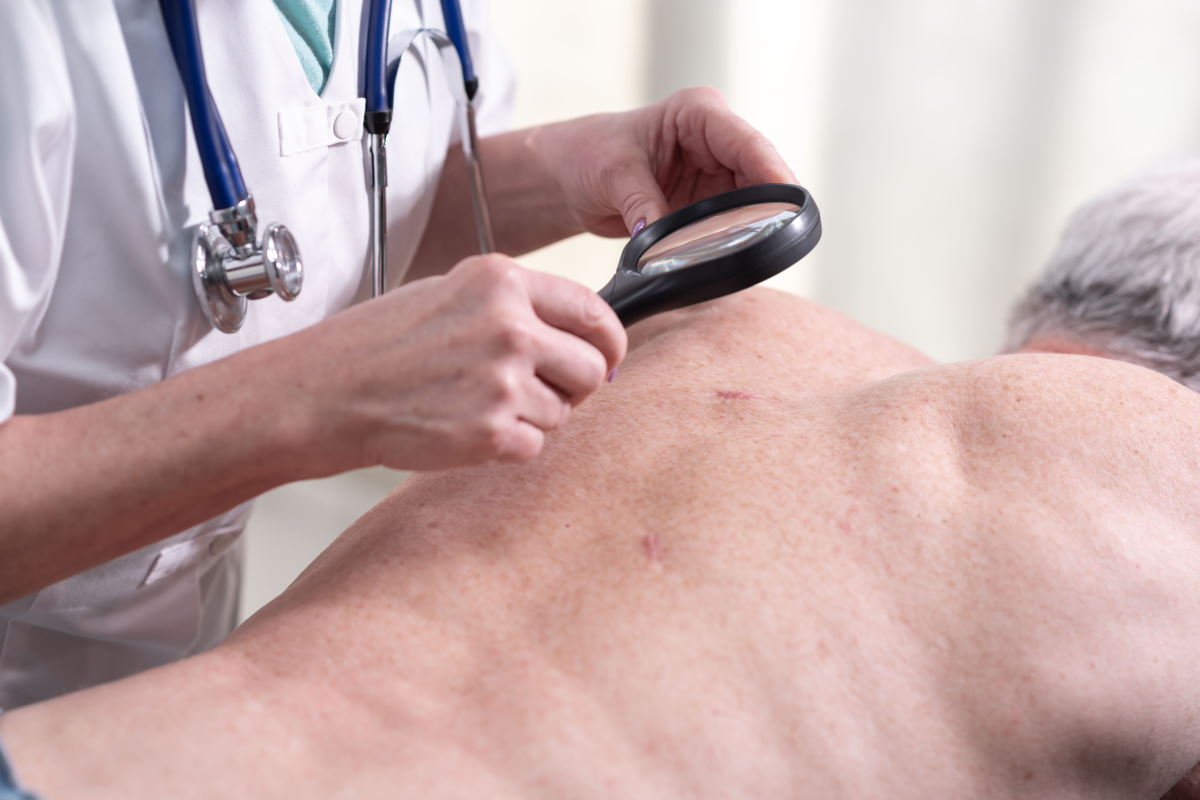If melanoma is a fairly well-known skin tumor, the same cannot be said for basalioma. Only in the last few days is it being talked about more often for the story of Valentina Ferragni, younger sister of the famous influencer Chiara, who recently underwent an operation for the removal of what could be a basalioma. The story of Valentina Ferragni has therefore turned the spotlight on a pathology that affects many people: it is, in fact, the most common among skin cancers.
Let’s see how it manifests itself, what are the most common causes and the most effective prevention strategies.
Read also: Melanoma: how many moles do you have on your right arm? Why is it important to count them and consult a dermatologist if they are over 11
What is basalioma and how it manifests itself
@jax10289/123rf
Basalioma (or basal cell carcinoma) is a skin cancer that arises from the malignant transformation of cells located in the deepest layer of the epidermis. Unlike the melanoma this type of tumor develops locally and usually remains limited. Only in rare cases does the basalioma give rise to metastases and many years later from its onset.
As reported by the Istituto Superiore di Sanità, 8 out of 10 skin cancers are basaliomas and in 95% of cases they occur in people over the age of 40. It is the elderly population, usually males, who suffer the most. Basaliomas occur mainly in the parts of the body most exposed to the sun, namely the face, scalp, ears, neck, shoulders and back and the incidence is higher in subjects who have lighter skin.
In the initial stage, this tumor rarely causes major symptoms such as the appearance of spots or a change in the appearance of the skin. But in an advanced stage, however, the basalioma can lead to bleeding, pain and itching and can manifest itself in various forms, including:
- persistent sunburn that tends to spread (erythematous form)
- lentil hard to the touch and pink in color (nodular shape)
- wound that does not heal (ulcerated form)
- mole or freckle (pigmented form)
- stain that tends to expand (plaque form)
- irregularly shaped scar (scleroderma-shaped)
The causes of basalioma
But what causes basalioma? This type of cancer can be caused by a number of both environmental and family factors, but also by contact with certain chemicals. The main risk factors are undoubtedly prolonged exposure to sunlight, without adequate protection, and the use of sun lamps. In addition, there are elements that increase the risk of the onset of basalioma and they are:
- contact with arsenic
- exposure to ionizing radiation
- failure of the body’s defense system (immune system) due to taking so-called immunosuppressive drugs (medicines used after transplants), or to diseases such as, for example, AIDS
- some cures for psoriasis
- genetic abnormalities
- particularly fair skin
Read also: Skin, sentinel of health: 7 signs that can reveal problems deep inside your body
Diagnosis and prevention
To diagnose basalioma you must first undergo a dermatological examination, during which the doctor will examine the spots or suspicious formations by inspecting them with theepiluminescence, a non-invasive technique that allows you to observe in detail and recognize any skin tumors (including melanoma). In some cases it may be necessary to resort to a biopsy.
As with all cancers, prevention is key. To protect the skin it is very important to limit exposure to ultraviolet rays, especially in the summer and in the hottest hours of the day. To ensure constant and complete protection, don’t forget to apply creams and sprays with sunscreens. Also avoid sunlamps and contact with harmful substances such as arsenic, tar, coal or paraffin. For the purpose of prevention, it is always advisable to carry out a dermatological examination annually, but if you notice changes in the skin and the appearance of strange spots, it is advisable to contact a specialist as soon as possible.
Follow us on Telegram | Instagram | Facebook | TikTok | Youtube
Source: National Institute of Health
Read also:
The article incorporates published studies and recommendations from international institutions and / or experts. We make no claims in the medical-scientific field and we report the facts as they are. The sources are indicated at the end of each article
.
